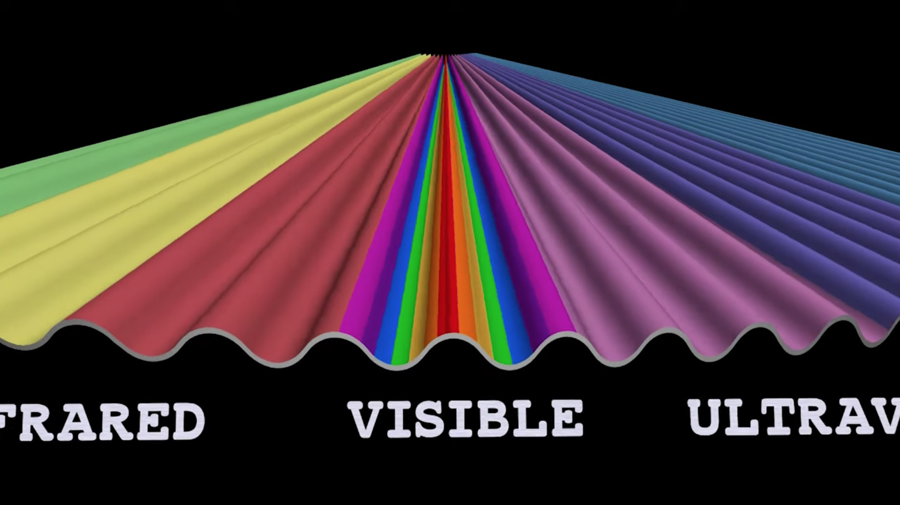Celestial objects play a game of hide-and-seek across the electromagnetic spectrum; some objects that appear invisible in one wavelength can be seen more clearly in another. Until the 20th century, astronomers relied solely on the light that was visible. The emergence of multiwavelength astronomy, the study of celestial objects across various electromagnetic wavelengths, reveals new views of astronomical phenomena and enables scientists to track the evolution of space objects and systems over time.
In this NASA Goddard video, Dr. Padi Boyd discusses the advantages of the Hubble Space Telescope‘s 1980s-built instruments and filters, as well as its location beyond our planet’s atmosphere.

“Multiwavelength astronomy is basically looking at our universe with the full spectrum of light at our disposal. So the light that we see with our eyes is the visible part of the electromagnetic spectrum, but that spectrum extends dramatically: much lower energy, longer wavelengths out into the radio—microwave, and radio. And then higher energy: the ultraviolet, the X-ray, the gamma rays. This is an entire sweep of the electromagnetic spectrum and our eyes are only sensitive to the visible.”

“And our atmosphere here on Earth actually protects us from many, many wavelengths of light. Ultraviolet light and high energy light is very damaging to life; it also blocks much of the infrared part of the spectrum. Hubble is above the Earth’s atmosphere—we’re in a low earth orbit and so we are above much of the atmosphere—and so we are free to observe in the ultraviolet and the near-infrared.”

In addition to being Hubble Space Telescope deputy operations project scientist, Boyd also serves as the Chief of the Exoplanets and Stellar Astrophysics Laboratory in the Astrophysics Science Division. She summarizes:
“Multiwavelength astronomy has revolutionized our understanding of celestial objects that have been under observation for centuries. By applying a range of wavelengths to these objects, we gain new insights into their characteristics, evolution, and the dynamic processes at play. This approach extends to galaxies, stars, nebulae, and even supernova remnants.”

“The advent of the James Webb Space Telescope promises to enrich our comprehension further, as it introduces a substantial influx of infrared data to the multiwavelength panorama. Positioned at the forefront of the electromagnetic spectrum, the James Webb Space Telescope is poised to spearhead ongoing multiwavelength explorations of the universe, ensuring that this multidimensional investigation continues for decades to come.”
Watch these related videos next:
• What is light? Royal Observatory Greenwich explains…
• Jewel Box Sun: Invisible wavelengths of light translated into colors
• Why Do We Put Telescopes in Space?
• The 1995 Hubble photo that changed astronomy
• This Is A Film About The James Webb Space Telescope
• Bill Nye explains the Webb Space Telescope’s first images
Curated, kid-friendly, independently-published. Support this mission by becoming a sustaining member today.

